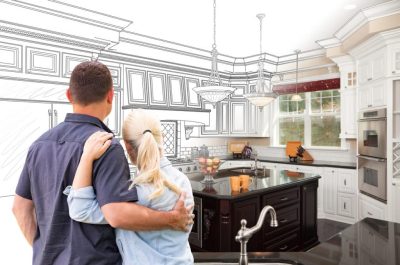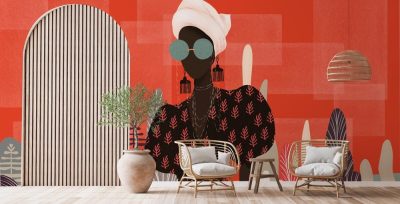
In interior design, past trends frequently inspire new ways to create spaces full of character and charm. Two styles that often emerge are vintage and retro. Although both tap into nostalgic aesthetics, they represent different design philosophies and eras. Understanding the difference between vintage vs. retro is essential for anyone seeking to introduce historical elements into their home. Vintage typically refers to original pieces or styles that are at least 20 years old, embodying the craftsmanship and character of their time. Retro, on the other hand, reimagines or imitates past trends, often blending influences from the 1950s to the 1980s.
The vintage vs. retro debate extends beyond appearance. Vintage pieces, known for their quality materials and timeless charm, create elegant and refined interiors. Retro design, in contrast, embraces bold colors, geometric patterns, and synthetic materials like vinyl and plastic, making spaces feel lively and energetic. This distinction allows homeowners to choose between a more sophisticated, understated style or one that is fun and full of energy.

What Is Vintage Design?
Vintage design refers to original pieces or styles that are between 20 and 100 years old. These items have survived through decades and often carry a sense of history and nostalgia. Unlike retro, which is inspired by past aesthetics, vintage design embraces the authentic craftsmanship and natural wear of original pieces.
Key Characteristics of Vintage Design:
- Authenticity and Craftsmanship: Vintage furniture and decor stand out for their authenticity. Each piece tells a story through its patina, which may include scratches or worn leather that add to its character. These items, unlike reproductions, originate from the period they represent.
- Natural Materials: High-quality materials like solid wood, iron, brass, and leather define vintage items. These materials ensure durability, and vintage pieces often outlast contemporary furniture.
- Timeless Aesthetic: Vintage items from periods like Victorian, Art Deco, or mid-century modern blend effortlessly with contemporary design. For example, a 1940s wooden dining table can become a stunning centerpiece in a modern kitchen.
- Historical Influence: Vintage design reflects the social and cultural trends of its time. For instance, Art Deco, known for its geometric patterns and luxurious materials, dominated the 1920s and 1930s, while mid-century modern design from the 1950s emphasized clean lines and functionalism.
Examples of Vintage Design:
- Furniture: Chesterfield sofas, antique wooden wardrobes, clawfoot bathtubs.
- Decor: Crystal chandeliers, vintage mirrors, Persian rugs, typewriters.
- Lighting: Tiffany lamps, lantern-style lights.

What Is Retro Design?
Retro design, by contrast, recreates or imitates the aesthetics of the past, often with a playful twist. Rather than using original pieces, retro design features modern items that replicate trends from the 1950s to the 1980s. The style focuses on bold colors and vibrant energy.
Key Characteristics of Retro Design:
- Vibrant Colors and Patterns: Retro design stands out for its use of bright colors like avocado green, mustard yellow, and burnt orange. Bold geometric patterns and playful motifs such as polka dots or starbursts further define this style.
- Synthetic Materials: Retro furniture commonly includes synthetic materials like plastic, vinyl, and chrome. These materials reflect the post-war era’s fascination with futuristic designs and innovative materials.
- Nostalgic and Fun: Retro design embraces a playful attitude, often borrowing from pop culture. Think of 1950s American diners with their neon signs, chrome stools, and jukeboxes, or the psychedelic patterns of the 1970s. Retro interiors exude energy and liveliness.
- Reproduction and Innovation: Unlike vintage, retro design allows for modern reproductions of past styles. This makes it more accessible, as homeowners can easily find new furniture and decor that evoke past decades without needing to source authentic pieces.
Examples of Retro Design:
- Furniture: Egg chairs, modular sofas, diner-style seating with Formica tables.
- Decor: Lava lamps, rotary phones, sunburst clocks, pop art-inspired paintings.
- Lighting: Sputnik chandeliers, neon signs, funky floor lamps.
How to Differentiate Between Vintage and Retro
Although both styles draw from the past, vintage design uses original items with historical significance, while retro recreates the look and feel of past decades with modern reproductions.
- Materials: Vintage furniture typically includes durable natural materials like wood, metal, and leather, while retro often features synthetics such as plastic, vinyl, and laminate.
- Mood and Feel: Vintage interiors feel classic, elegant, and romantic. Retro spaces, on the other hand, radiate playfulness and energy with bold colors, quirky patterns, and whimsical touches.
- Era Focus: Vintage covers a broad range, from early 20th century to the 1980s. Retro focuses specifically on the mid-20th century, blending elements from the 1950s to 1980s.

Incorporating Vintage and Retro into Modern Homes
Both vintage and retro styles can bring unique charm to modern spaces, but how you use them depends on the atmosphere you want to create.
Tips for Incorporating Vintage Design:
- Start with a Statement Piece: Anchor a room with a vintage item, such as a mid-century sofa or an antique dresser.
- Mix Old and New: Vintage furniture pairs well with contemporary pieces, so don’t hesitate to mix styles. A vintage coffee table can look stunning alongside a sleek, modern sofa.
- Embrace the Wear: Let the natural patina of vintage items, like worn leather or scratched wood, shine through. These marks of time add character and tell a story.
Tips for Incorporating Retro Design:
- Use Bold Colors Sparingly: Retro design often features bright, contrasting colors. To avoid overwhelming the space, start with a few pops of color, such as bright orange throw pillows or a neon sign.
- Blend Styles: Retro works best when mixed with contemporary elements. Try pairing a retro egg chair with minimalist furniture or adding a geometric-patterned rug to a neutral room.
- Have Fun with Accessories: Retro design thrives on personality, so embrace quirky decor like lava lamps, vinyl record players, and bold artwork.
Conclusion: Vintage vs. Retro in Your Home
Understanding the distinction between vintage vs. retro is crucial for anyone interested in blending history with modern interior design. If you appreciate authentic, timeless pieces that carry a story, vintage design may suit your taste. From heirloom armchairs to beautifully weathered wooden dining tables, vintage items bring elegance and character to any space. Conversely, if you enjoy bold colors, funky patterns, and a touch of nostalgia, retro design invites you to explore the lively aesthetics of past decades. Retro’s playful elements, like iconic furniture and quirky decor, add fun and vibrancy to your home.
Ultimately, the choice between vintage vs. retro comes down to personal preference and the atmosphere you wish to create. Both styles offer a rich opportunity to express individuality while bringing a touch of history and creativity to your space. Whether you lean toward the polished charm of vintage or the dynamic energy of retro, these timeless styles provide the perfect canvas for personalized, unique home design.









